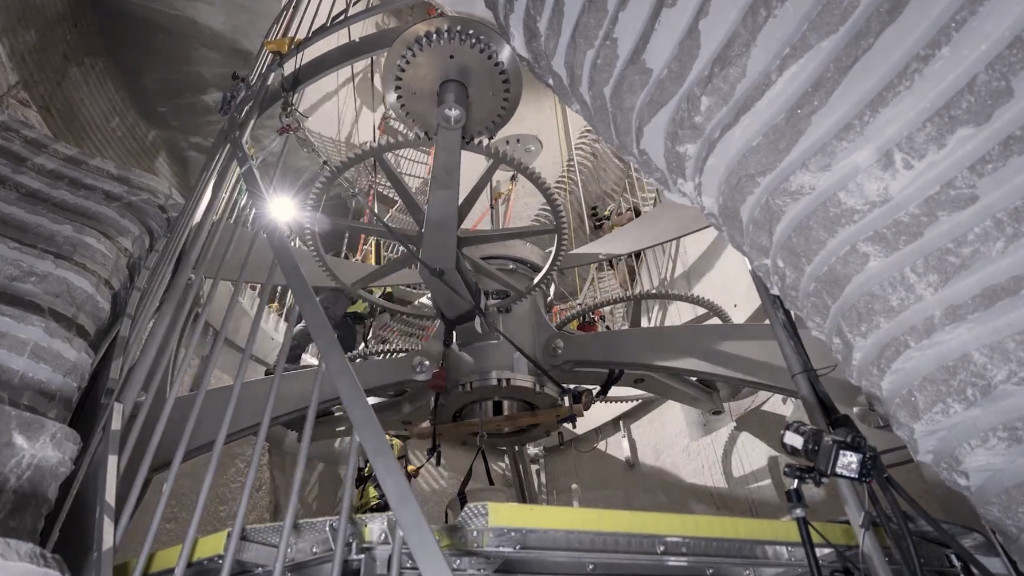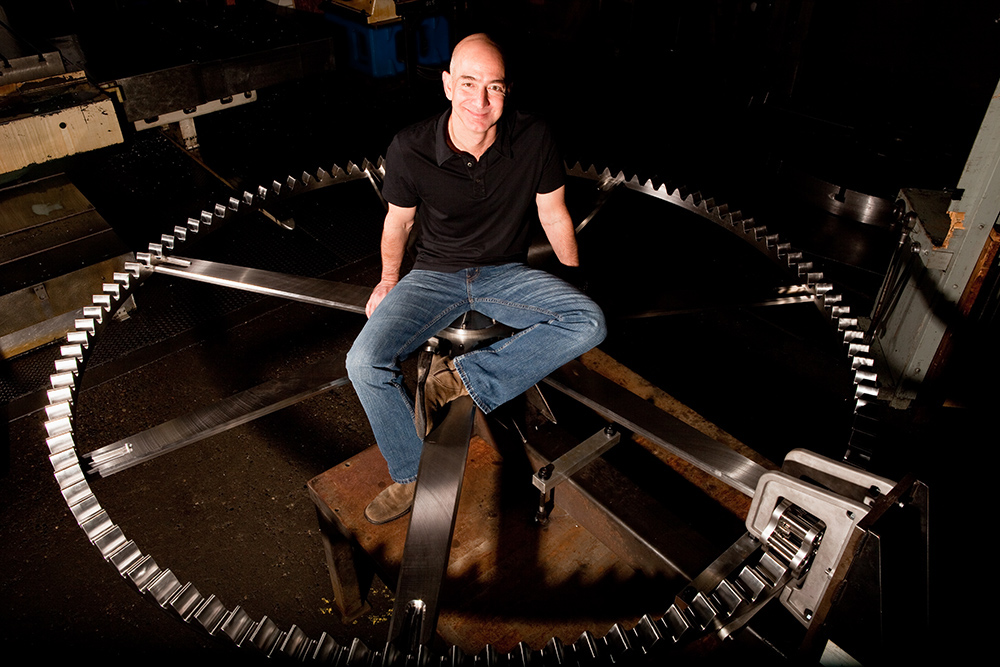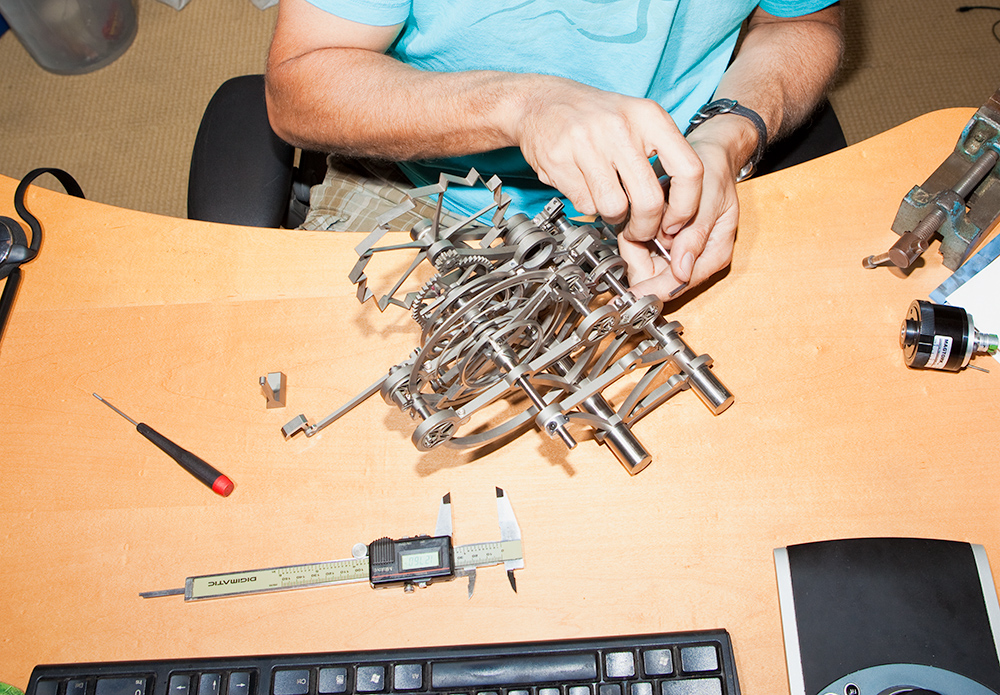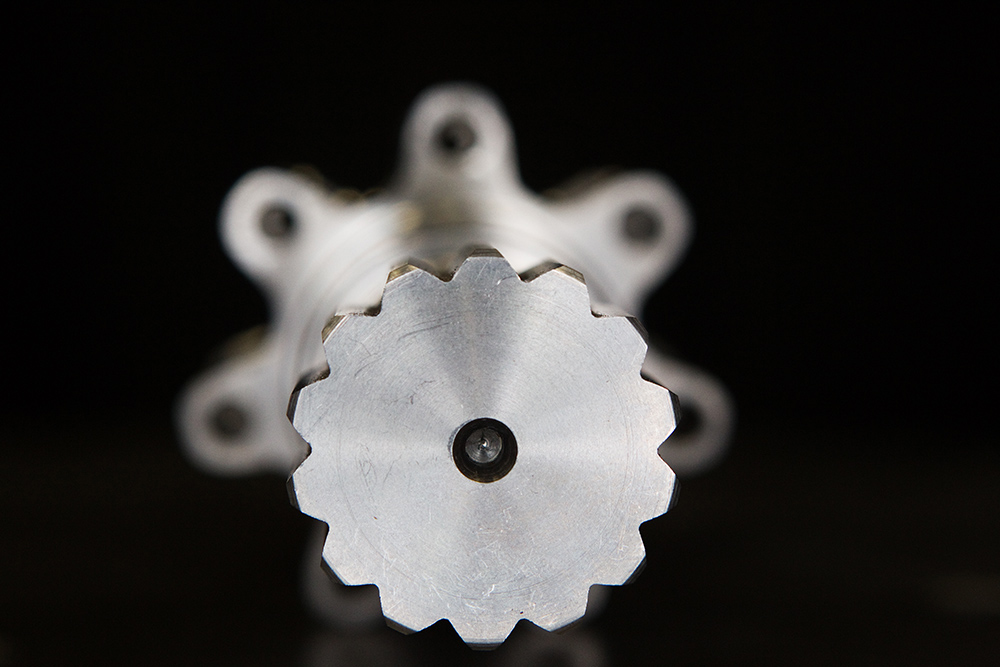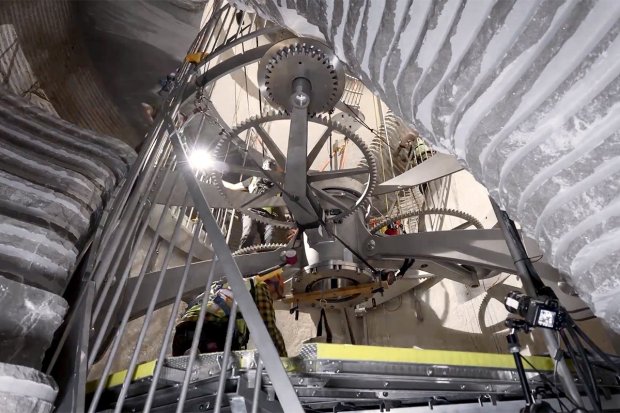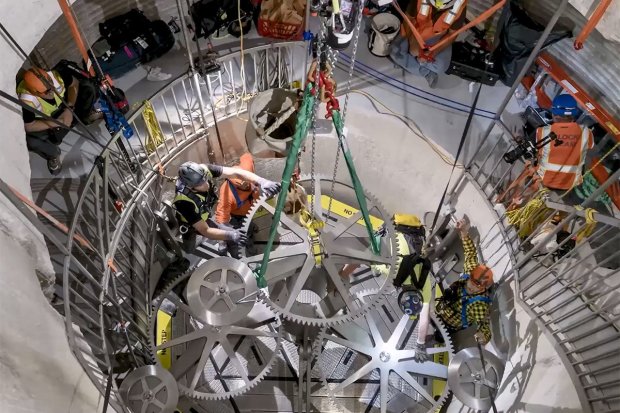
When billionaire and Amazon.com founder Jeff Bezos tweets a message on Twitter, the world listens. That’s what happened a couple of days ago when Mr. Bezos shared a video of substantial progress being made on a project he mostly paid for known as the 10,000 Year Clock – a terrestrial timepiece intended to operate for 10,000 years. News of the 10,000 Year Clock’s existence isn’t new, but updates on its progress are. A complex cast of genius thinkers and technology professionals are behind not only the production of the 10,000 Year Clock, but also its core design and intention. The purpose behind the 10,000 Year Clock – in addition to its compelling engineering challenge – is a sentimental one for the masses, brought to life thanks to the spending power of our current society’s ultra-rich.
10,000 Year Clock inventor Danny Hillis easily admits he doesn’t have the faintest idea of what the future will be like in 10,000 years – but that is sort of the point. The entire reason for the existence of the 10,000 Year Clock is part of the overall mission of a non-profit organization called The Long Now Foundation. In some circles the clock is known as the “Clock Of The Long Now
.” “Long Now” is an artistic phrase meant to remark on humanity’s sense of time and the impact of our actions on our world. The foundation’s goal appears to be the promotion of long-term thinking in decision making (and who could argue with the sensibility of such a mission?). The 10,000 Year Clock is one of the foundation’s flagship projects, being currently built by Danny Hillis’ Applied Minds company.
The people and agendas behind the design and production of the fascinating 10,000 Year Clock are subjects for another discussion. Suffice it to say that among other things, Mr. Bezos, Hillis, and the other people involved in the 10,000 Year Clock project are dedicated to our species collectively upping our game when it comes to understanding the wisdom and application of authentic long-term decision making. We live in a world regularly marred by short-term decision making where immediate gain is often followed by greater loss.
More generally the 10,000 Year Clock project is meant to inspire tomorrow’s long-term thinkers – which is perhaps its greatest immediate value. Generations of potential scientists and thinkers growing up in the mid 20th century were comparatively lucky with many young people today (in my humble opinion). Everything from the atomic age to space travel saw enormous private and government investment into science research and development. Today’s world has mostly private interests funding innovation – which is predictably immediate profit-based as a result. Many argue that without a more dedicated global and government effort to spur innovation, private interests simply aren’t enough to propel our next “moonshot.” Thus, the real value of the 10,000 Year Clock isn’t merely in how impressive these artifacts will be to our long-term ancestors, but in how such a project will inspire today’s current and future leaders to invest in long-shot projects that benefit innovation and invention without promise of immediate cash reward.
The 10,000 Year Clock getting all the media attention in a remote part of Texas isn’t the only one planned. Bezos’ $42 million dollar investment in the 10,000 Year Clock does get it built on his personal land, but there are plans for more of them to be built. That actually makes sense since if the design of the system exists and works, producing copies isn’t nearly as expensive as the original. More pragmatically, if the mission of the the Long Now foundation is for the clock to last 10,000 years, then producing a few of them and relying on redundancy (a few are bound to be destroyed or simply break) is very practical. Already a second site for the next 10,000 Year Clock has been retained in Nevada.
Choosing a location for the 10,000 Year Clock is an important part of how the system works and is essential to the device’s long-term planned operation. To be clear, no one actually knows if the 10,000 Year Clock will actually operate for that long. There aren’t any mechanical devices that old or close to that old still in operation to learn from. Nevertheless, the 10,000 Year Clock project team has the entire world of traditional watchmaking to learn from, as well as the resources to use powerful simulation software – not to mention a budget sufficient to get pretty much any material or component they need. To keep the 10,000 Year Clock still, safe, and free from too much dust and debris, it is being constructed underground inside of a mountain.
Temperature and seismic stability are essential parts of choosing where to build the 10,000 Year Clock. Another poetic element to the project is just how remote the installation is. When completed (there is no completion date yet), the Clock will be open to guests – and in fact the entire installation is meant to impress. It is worth noting that Danny Hillis and others working at Applied Minds have backgrounds working for Disney (where presentation is everything). The clock won’t be easy to get to. In fact, its entrance is supposed to be a secret stainless steel door in the ground. The 10,000 Year Clock team are building the clock in such a remote location not only because the location is technically ideal, but because it is meant to have people ask “what will that area be like in 10,000 years?” It is entirely possible that the clock will be smack in the middle of a bustling future metropolis. Unlike some industrialists out there today, Jeff Bezos is fond of the notion that we should maintain Earth as the long-term home for humanity. This is contrary to the popular notion that no matter what ecologically-friendly preventative measures humans engage in, our rate of population increase as well as energy consumption will inevitably lead to an Earth that can no longer sustain life. Such an eventuality, according to such thinkers, would require humans to leave Earth in search of another suitable home or homes.
Part of Bezos’ and Hillis’ long-term thinking philosophy is that discipline and research are the best ways to solve our problems. Lots of both were required to get the 10,000 Year Clock to this point, and will also be required to get it finished. In some ways this might be the most significant advancement in traditional horology that our generation will ever see. Imagine, a clock designed to work on its own, without any human intervention, and without errors in accuracy, for a full 10,000 years. That isn’t just the goal of the 10,000 Year Clock, that is also its promise. Danny Hillis began to think about the 10,000 Year Clock and by the mid 1990s had a working prototype. In the early 2000s Jeff Bezos (an existing friend of Hillis) decided to fund the project (as a rule, having wealthy friends to fund wild ideas is possibly a good idea), and now in 2018 construction of it seems to be going along very nicely. With that said, even the Long Now Foundation admits that some of the technical issues haven’t been worked out yet (and that is one of the reasons why the project doesn’t even have an estimated completion date – again, good to have very rich friends).
Most of how the 10,000 Year Clock will work has been developed already, and its systems are deceptively complex given how the machine is meant to operate. What many people do not fully appreciate is that the 10,000 Year Clock makers want future people finding it to be totally flabbergasted at what it is and why it was made. The design team considered everything from how the clock should indicate time down to the atmosphere of the clock dial chamber. In fact, the underground “lair” of the 10,000 Year Clock will come with five special milestone rooms – only one of which will be completed when the clock is finished. These rooms are meant to celebrate 1, 10, 100, 1000, and 10,000 year milestones in the life of the clock. The first room which is being built by the current team will feature a larger orrery (mechanical indication of the position and movement of the planets), as well as a host of impressive mechanics dedicated to our current understanding of the sky. Each of the four empty rooms will contain hookups for future installations so that they can be connected to the clock’s power system and current data.
Much of the clock is vertical, with the bulk of the device being a 200 foot tall column, existing in a 500 foot shaft that robots had to bore. A custom-built mason work spiraling staircase will allow people who find the secret entrance of the clock to descend into its depths. There will be no electricity or artificial light available. Two of the most important technical challenges faced by the 10,000 Year Clock’s team were how to keep it powered and how to keep it accurate. Interestingly enough, both of these problems were already more or less worked out by the world of traditional timepiece makers – in a much smaller and short-lived form. This is an interesting irony, because people at the cutting edge of high-tech are once again looking at technology solutions that those in the world of horology sometimes solved hundreds of years ago. What makes this more ironic is that most horological research over the last 100 years has been dedicated to making timekeeping systems smaller. For the 10,000 Year Clock, the challenge is a macro one. Meaning that the major effort required is not in making things smaller, but rather in making them larger and long-lasting.

